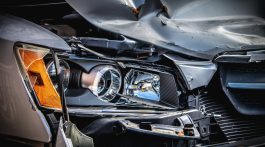The Office of Legislative Research conducted a research report on speed limit increases and accident rates, and found that the maximum speed limit increase of just 55 mph to 65 mph in 1987 resulted in an increase in crash occurrence, crash injury potential, and crash fatality rate across the board. Regardless of this inherent increase in danger, states have since been allowed to set their own speed limits – or no speed limits – on their roads, causing an even larger threat to drivers and passengers alike. If and when you are driving on your state’s Interstate or a road set at a maximum speed limit, it is especially important to drive alertly and defensively. This blog will discuss the scope of high speed limits and their threat to you.
A History Of Speed Limits
According to the IIHS, speed limits on the roadways first came into law as early as 1901 in Connecticut. Since then, most speed limits have been set by individual states, although a national maximum speed limit was established throughout the 1970s and 80s. Furthermore, as of 2022, 22 states have a maximum speed of 70 mph, 11 a maximum of 75 mph, and eight have stretches of road that allow up to 80 mph. Nevertheless, while there are countless other factors in car accidents other than the speed of a vehicle, the IIHS has found that raising speed limits has increased vehicle deaths.
Crash Statistics Since Increasing Maximum Road Speeds
The full repeal of a nationwide maximum speed limit was when the true impact on drivers became noticeable.
- Freeways with increased speed limits experienced a 15% increase in fatalities and 17% increase in fatality rates.
- 35% increase in fatalities in states with 70 mph speed limits and 38% increase in fatalities in states with 75 mph speed limits.
- 3% increase in injuries on non-interstates.
- When speeds increase from 40 mph to 60 mph, the crash energy that needs to be managed rises by 125%.
According to accident lawyers at Larry R. Williams, PLLC, it’s important to note that while speed plays a huge role in the severity of a crash, it’s not the only contributing factor. There are multiple determinants that assist in the reason the speed increase influences vehicle collisions, and the size of the vehicles is one of them. The larger the mass difference in vehicles, the more one party is severely affected than the other. This also affects bicyclists, pedestrians and motorcyclists when hit by a larger vehicle.
A study conducted on the most dangerous areas to drive in California proves that maximum speed limit areas will always be the most dangerous. The study found that the 12 most dangerous roads in California are all freeways.
Methods Of Speed Enforcement
Established speed limits would be useless unless they are enforced by the authorities. Since the inception of the speed limit, law enforcement has developed several methods to monitor the speed of drivers and take legal action against them for not following it. Some of the most common tactics for speed limit enforcement include:
Radar: Used by most police officers, the radar gun uses an electromagnetic signal that picks up and returns the speed of the object that it is pointed at. While radar is considered to be highly accurate, on a traffic-heavy roadway, it can be difficult to pinpoint the speed of a specific vehicle.
VASCAR: VASCAR (visual average speed calculator and recorder) is a portable computer that calculates a vehicle’s speed by reading how long it takes to travel an established length of road. Known to be more accurate from greater distance than radar, it can also detect the speed of vehicles coming from the opposite direction.
Aerial Speed Measurement: This form of speed limit enforcement is performed by police officers flying in small airplanes that are measuring speed based on how long it takes drivers to travel between two or more established pavement markings. This data is then relayed to officers on the ground who
Safety Driving Tips For High-Speed Roadways
Don’t Drive Faster Than You’re Comfortable: Despite speed limit laws, there will always be cars on the road that are going faster than is legal, not to mention safe. However, it is important that you don’t allow these other drivers to pressure you to drive faster than you are comfortable, even if they appear to be visibly annoyed that you aren’t driving at the speed that they want you to, don’t be afraid to pull over and allow them to pass.
Give Other Drivers Plenty of Space: In the event that the driver in front of you comes to a hard stop, gets in a collision, or the speed decreases unexpectedly, having a good amount of distance between you and the next car is a safe means of prevention. It’s best practice to be three seconds from the next car’s position.
Drive Slower In Difficult Weather Conditions: As noted by the accident lawyers at Shaw Cowart rain, fog, wind, and other weather extremes make it difficult for drivers to balance the road, the other vehicles, and the weather’s impact at the same time. In these conditions, always but especially when you aren’t used to harsh weather, slow down and drive at what feels like a safe pace given your environment. Otherwise, you could find yourself in a rollover accident.



No Comment